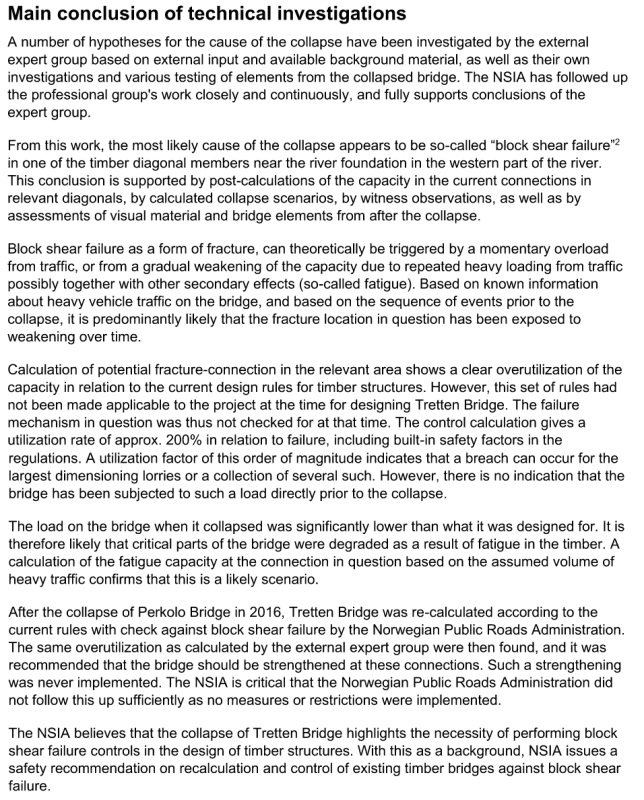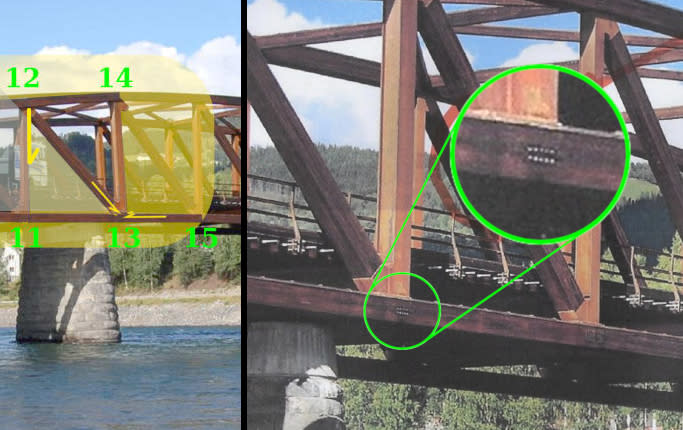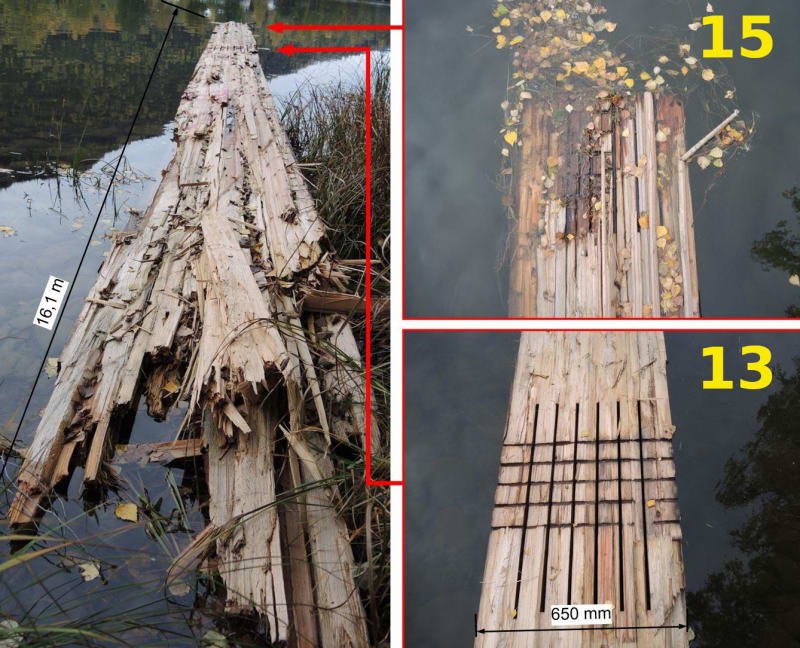Norway bridge collapse (Part 1)
The latest on the Tretten bridge collapse from Norwegian Safety Investigation Authority (English site)
- Sub-report 1 on the bridge collapse at Tretten on 15 August 2022 - Published 15.08.2023, 3.7 MB
- Appendix B - 33.5 MB
- Report film for download (188 MB)
These are Norwegian language links though Sub-report 1 includes an English Summary.
A further report is the works:
Note: In the reports, nodes are designated A for upstream (north truss) and B for downstream (south truss).
The latest on the Tretten bridge collapse from Norwegian Safety Investigation Authority (English site)
- Sub-report 1 on the bridge collapse at Tretten on 15 August 2022 - Published 15.08.2023, 3.7 MB
- Appendix B - 33.5 MB
- Report film for download (188 MB)
These are Norwegian language links though Sub-report 1 includes an English Summary.
A further report is the works:
NSIA said:Sub-report 2 will focus on bridge management and follow-up of Tretten bridge throughout the bridge's life cycle, based on the main findings identified through the technical investigations.
Note: In the reports, nodes are designated A for upstream (north truss) and B for downstream (south truss).




